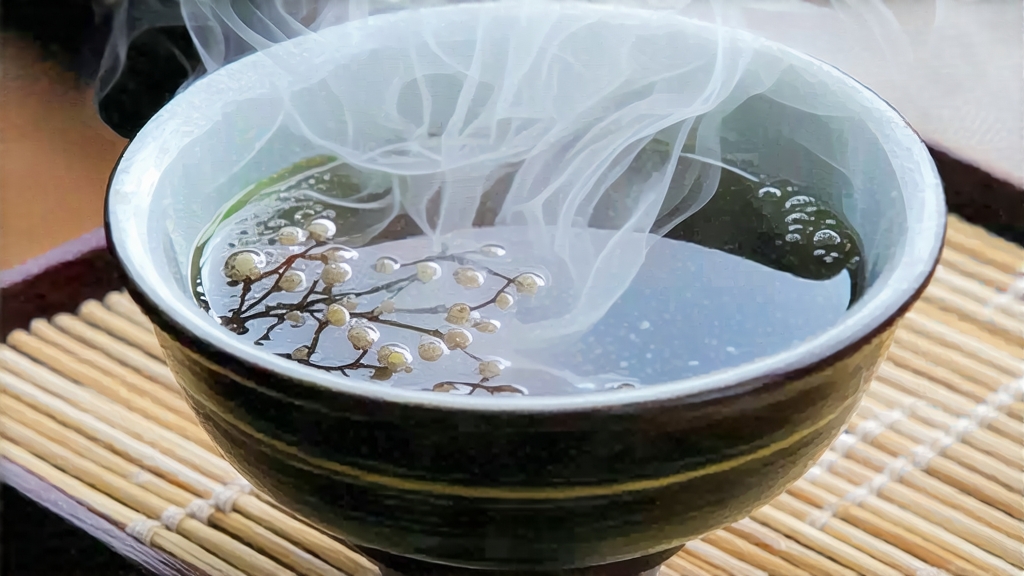
Among the six great families of Chinese tea, white tea is the least theatrical yet the most haunting. It is not rolled, not roasted, not kneaded into dramatic shapes; instead it is simply allowed to be itself, drying in the air until the leaf remembers the scent of mountain mist. Within this minimalist lineage, Bai Hao Yin Zhen—literally “White-Hair Silver Needle”—stands as the purest expression of the art. Each slender bud, sheathed in silvery down, looks like a sliver of moonlight that has forgotten to melt. One sip and the modern world recedes; the palate is left with the hush of pine forests after rain.
Historical whispers
The first verifiable record of white tea appears in the Song dynasty treatise “Da Guan Cha Lun” (1107 CE), where Emperor Huizong praises “white buds from the northern ridges of Fujian.” Yet those tribute cakes were steamed and pressed, distant ancestors of today’s loose-leaf Silver Needle. The style we recognize—pluck, wither, dry—crystallized during the late Qing, when market demand from European apothecaries, who valued the buds for their “cooling” properties, encouraged Fuding farmers to keep the leaf unpressed. By 1891 Silver Needle was freighted down the Min River to Fuzhou, then across oceans to London, Amsterdam and St. Petersburg, commanding prices higher than Keemun or Da Hong Pao. War and revolution interrupted the trade, but the 1960s state reclassification of white tea as a strategic export revived the gardens. Today Fuding alone boasts 18,000 hectares of dedicated white-tea cultivars, and Silver Needle remains the gift Beijing presents to foreign dignitaries who already own everything else.
Micro-terroir: why Fuding tastes like Fuding
Fuding county clings to the northeastern horn of Fujian province, where the Daiyun mountain range funnels humid maritime air into sudden night fogs. The local xiao ye zhong (“small-leaf race”) of Camellia sinensis has evolved an unusually thick cuticle to cope with salt-laden breezes; inside the leaf, polyphenol oxidase activity is naturally low, creating the tea’s signature mellow sweetness. Soils are lateritic granite, porous and mineral-rich, draining quickly so that roots stress-accumulate amino acids. At 200–600 m elevation the temperature differential between day and night can exceed 10 °C, concentrating fragrant volatiles. In spring, when the first buds appear, the sun is still gentle; farmers speak of “three days soft, two days fierce” weather that allows slow withering without baking the leaf. Move the same cultivar fifty kilometres west and the down turns ochre, the liquor coarse—proof that Silver Needle is less a recipe than a dialogue between plant and place.
Pluck: the dawn discipline
Authentic Silver Needle is picked only during a narrow window—roughly fifteen days from mid-March to early April—when the bud has reached 2.5–3 cm but the first leaf has not yet unfurled. Experienced pickers use the “three twirls” rule: support the branch with the index finger, press the bud gently against the thumb, rotate the wrist to snap rather than pull, ensuring the tender base remains intact. A full kilogram of finished tea needs 30,000 such buds, all plucked before ten o’clock so that dew does not lengthen oxidation later. The baskets are woven from thin bamboo strips wide enough to let air pass; plastic is forbidden because it traps heat and “cooks” the tips. Within two hours of plucking the load must reach the withering shed, a timber longhouse whose windows are angled to catch the southeast breeze.
Withering: the invisible choreography
Inside the shed, buds are laid 2 cm deep on rectangular bamboo trays stacked like drawers in a Victorian apothecary. For the first six hours the leaf is virtually untouched; enzymes begin breaking down bitter catechins into sweeter gallated forms. Every forty minutes a master “tea conductor” lifts a tray shoulder-high, tilting it so that the buds roll like slow-motion hailstones, redistributing moisture without bruising. At dusk charcoal pans buried in ash are slid beneath the lower tiers, not to heat but to balance humidity. Night withering lasts another twelve hours; moonlight itself is considered an ingredient, its ultraviolet rays triggering a mild cis-3